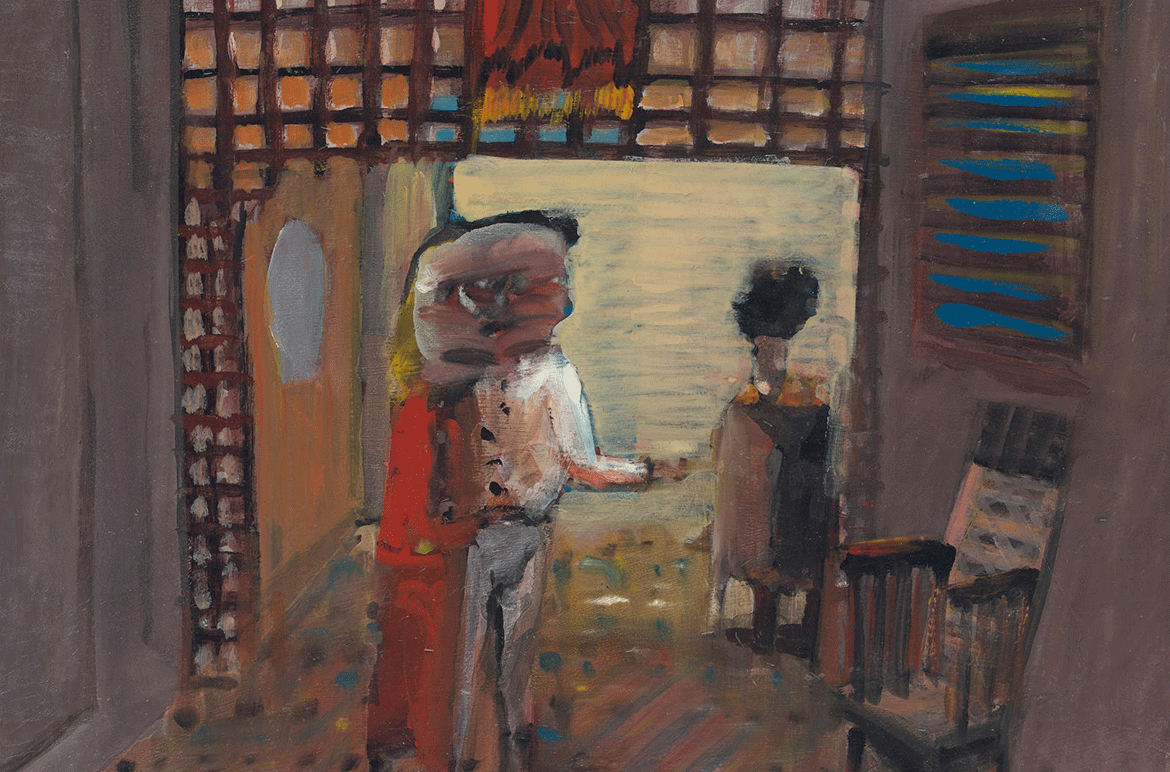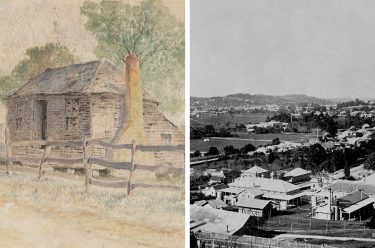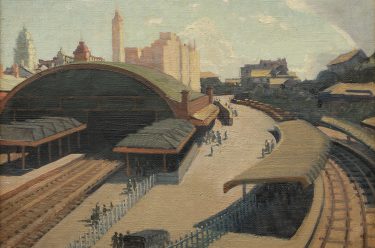The time Charles Blackman (1928-2018 ) spent in Queensland was central to his development as one of the most important Australian artists of his generation. It was during his early visits to Brisbane first in 1948 and then regularly from 1951, that the artist experienced the sense of intense personal discovery that was to launch his career trajectory.
Interior view, Spring Hill Brisbane 1951 is from this profoundly creative period in his oeuvre, and provides compelling evidence to demonstrate the major influence that Blackman’s sojourn in Queensland had on his career from the late 1940s.
Charles Blackman ‘Interior view, Spring Hill Brisbane’ 1951
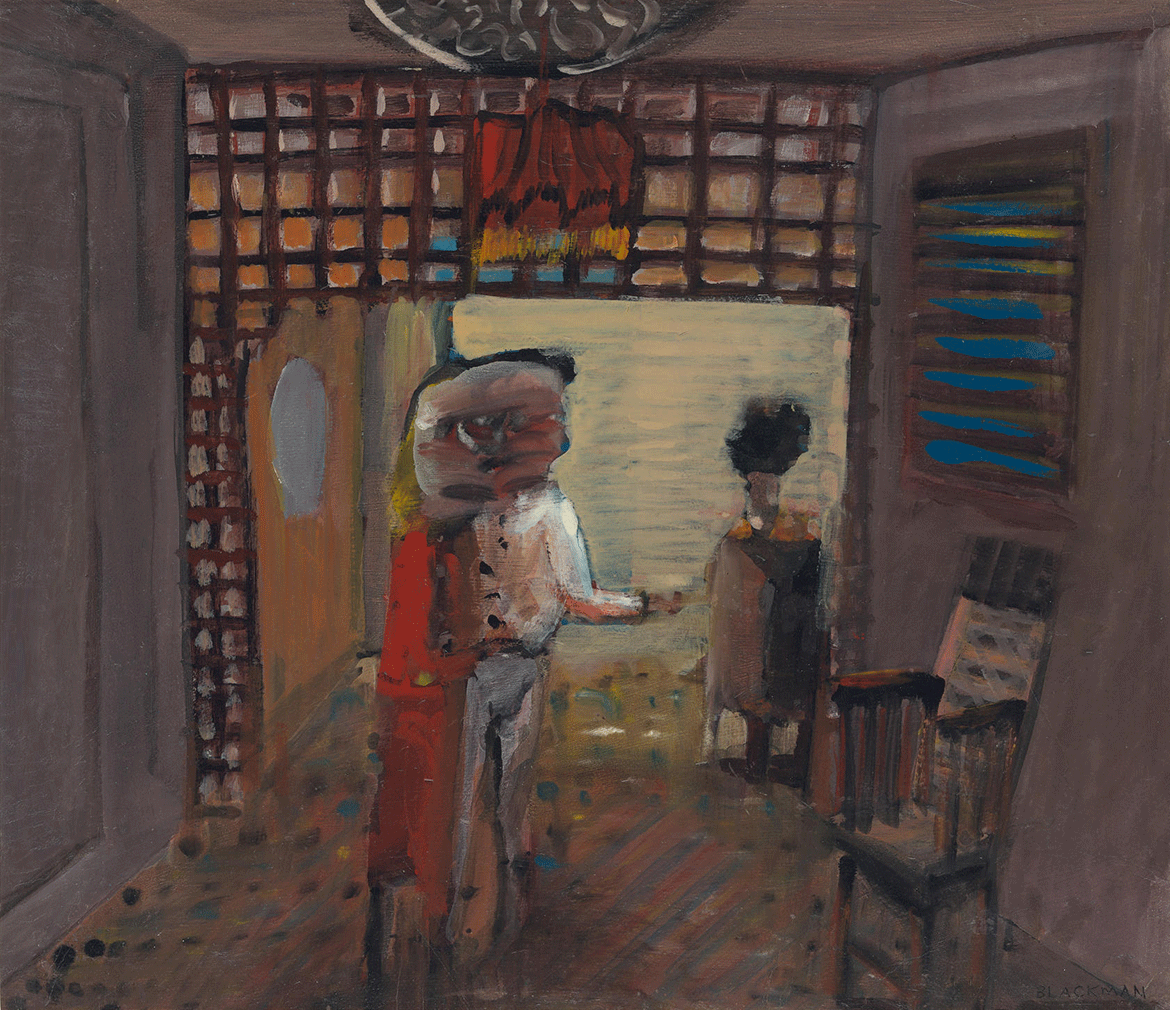
After resigning from a journalism cadetship at the Sydney Sun, Blackman hitchhiked to Brisbane in early 1948. He met the young artists of the Miya Studio, including Laurence Hope, Don Savage, and Laurence Collinson, and the closely affiliated group of Barjai writers, including Barrett Reid and, most significantly his wife-to-be, Barbara Patterson. Blackman’s association with young artists and writers greatly influenced his personal and artistic development.
In 1950 Blackman reconnected with Patterson who was then living in Sydney, and the couple moved to Melbourne where they married on 18 June 1951. That year the couple travelled north for the winter to make their first visit to the poet Judith Wright and her husband Jack McKinney on Mt Tamborine. The couple’s union ensured an ongoing connection to Brisbane, Charles and Barbara travelling north for the winter to Barbara’s mother for several years. Blackman would later comment that ‘it wasn’t until Barbara and I were actually living together that I really started painting pictures’.1
Their marriage was to become a continuing source of nourishment and mutual development and Interior view, Spring Hill Brisbane is a lovely evocation of this connection, the figures of Barbara with bright yellow hair and red dress appears fused with the figure of Blackman, their faces blurred together as one. The opaqueness of the faces could also reference Barbara’s progressive blindness. Barbara’s condition taught Blackman not to rely solely on his visual engagement with the world, but to consciously experience it through all his senses, seeking to capture this heightened sensory engagement in his work. The painting effectively conveying a feel for the textures of the room, the ceiling light shade, mirror, flooring and empty chair, all in a child-like quality that Blackman achieved in his best work.
The interior scene is aligned to the timber architecture that defined Brisbane’s inner suburbs at that time, and still does to a large degree. Blackman had a particular affinity with these buildings stating:
‘I especially liked the Spring Hill sort of slanting, slatting latticed timber houses… I still have terribly clear pictures of those sort of tropical nights; we use to play jazz records staring out into the crazy landscape.2
Spring Hill, Brisbane
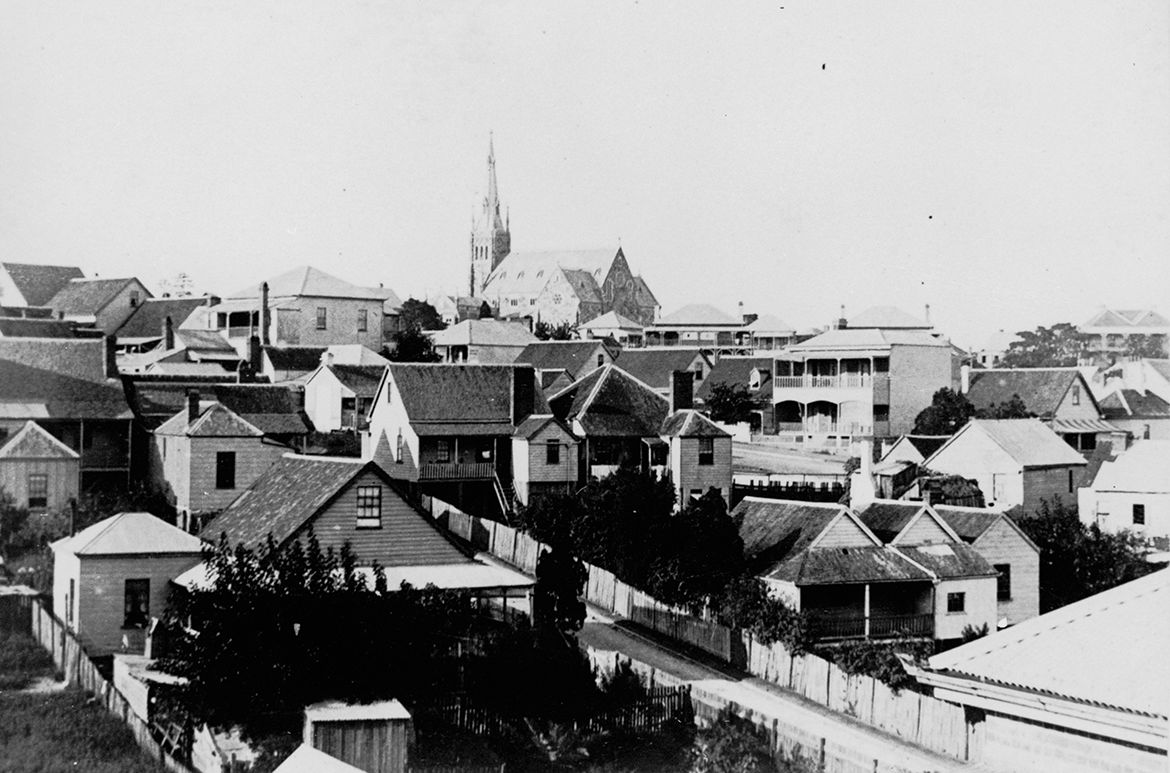

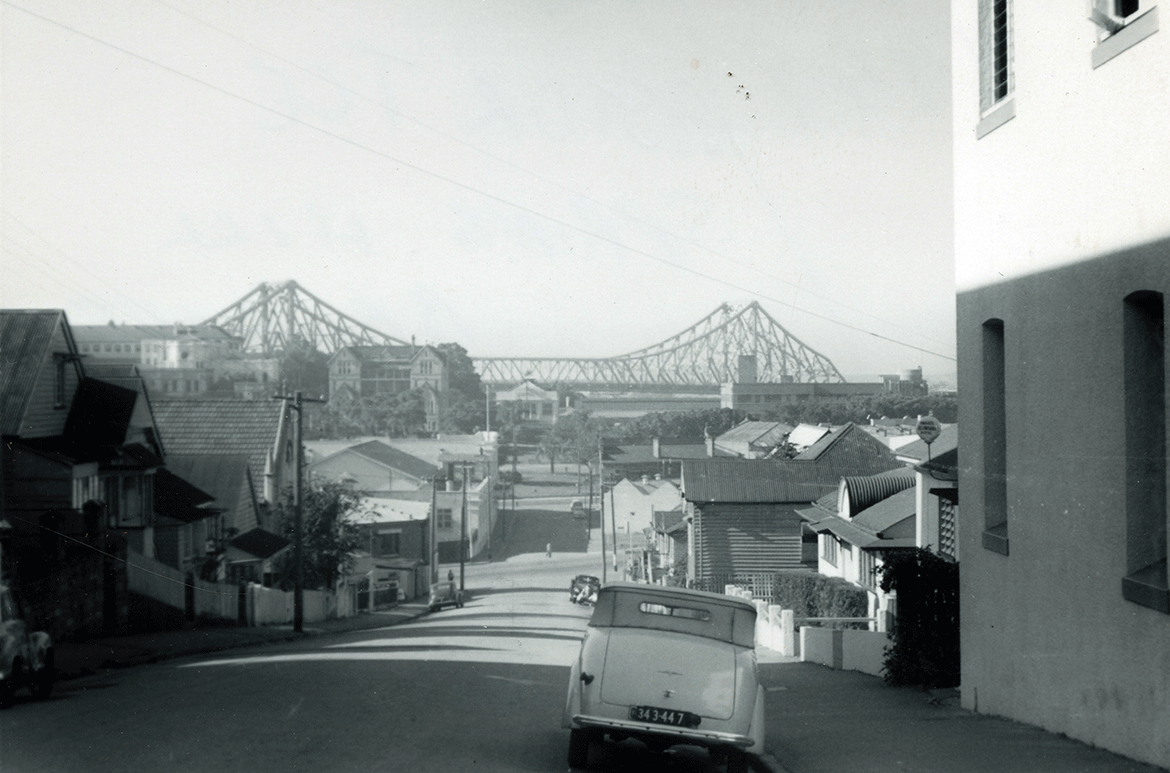
Charles Blackman ‘(Self-portrait in front of a boarding house, Spring Hill)’ 1951
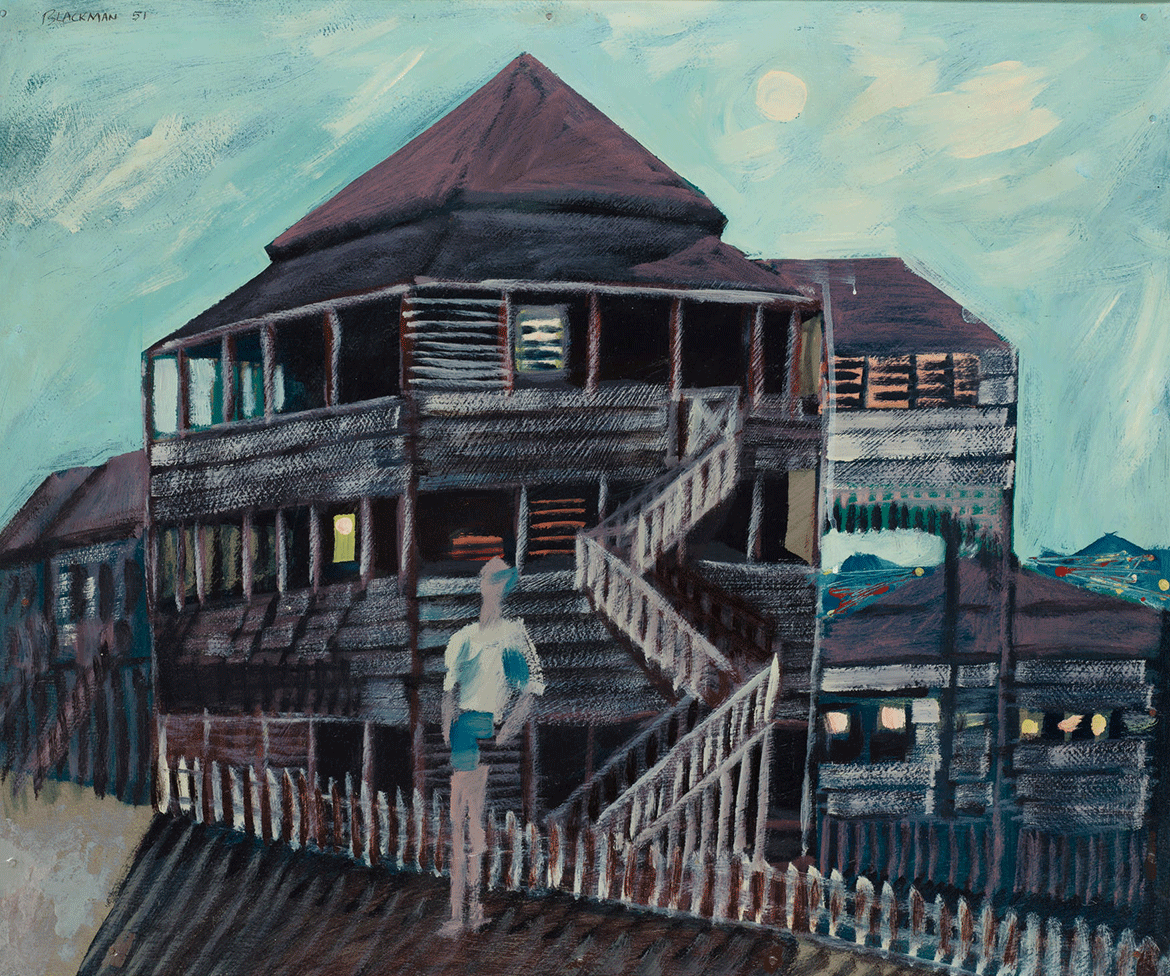
The juxtaposition of Interior view, Spring Hill Brisbane and (Self-portrait in front of a boarding house, Spring Hill) (illustrated) is particularly effective in showing the exterior and interior of the unique ‘Queenslander’ architectural style. This would emphasise how this early Brisbane period was a time of personal discovery essential to Blackman’s painting career. Interior view, Spring Hill Brisbane encapsulates his new found love and muse in a visual language which suggests his inner world. This painting and the paintings completed in Queensland in these early years are all articulated through a strong and unique visual vocabulary focused on an inner, psychological reality, which found its inspiration in the artist’s immediate environment at the time.
Michael Hawker is former Associate Curator, Australian Art, QAGOMA
Endnotes
1 Thomas Shapcott, “Focus on Charles Blackman”, University of Queensland Press, St Lucia, 1967, p.13.
2 Ibid, p.16.
Charles Blackman 1968
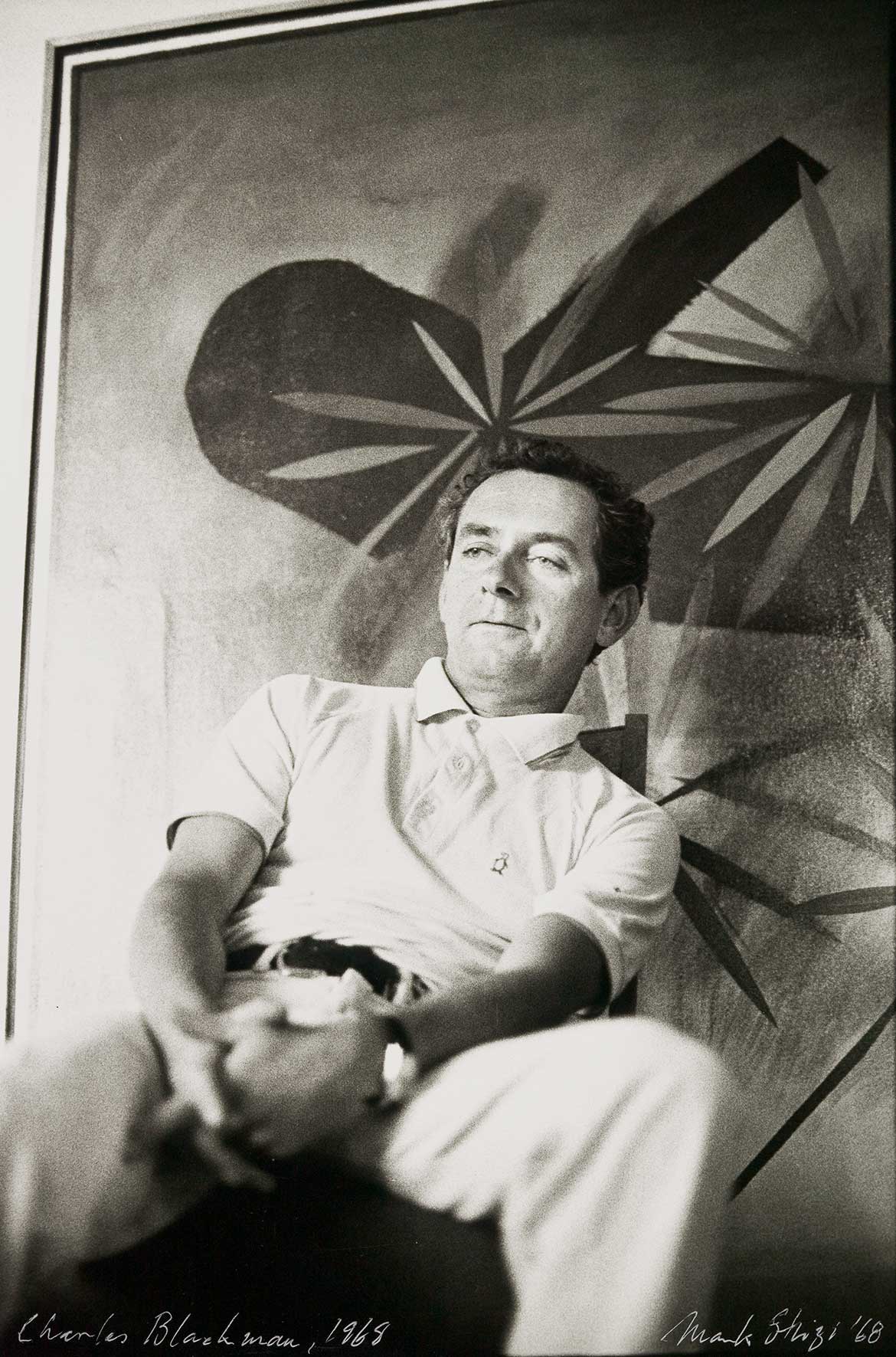
#QAGOMA
